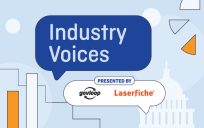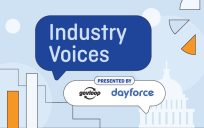The “Bring Me a Rock” Scenario
To better understand the concept of Experience as a Service (XaaS), let me first describe what we need to avoid in any successful customer experience/customer success engagement. I’ll call it the “bring me a rock” scenario. Imagine a situation where your customer asks you for a rock, but you are not allowed to press for specific details. You then will be in a never-ending loop of showing up with rocks (e.g., igneous, metamorphic, sedimentary) of all shapes and sizes and colors. The customer will grow frustrated with the “loop rut” and lack of progress and you, as the dedicated supplier, will be exhausted by innumerable options of rock delivery.

The key to avoid this loop is to have an Organizational Outcome Discussion early and come to a deep understanding of the outcomes desired at the very beginning of any engagement. This is key to any customer success journey involving XaaS offerings.
Key takeaway: Seek to understand the desired business outcomes first. Then explore the XaaS aspects.
The WHAT: What is the XaaS business model?
XaaS is a broad category of business models in which users access products, tools, technologies, and/or services “as a service.” More traditionally and commonly, in the cloud industry, XaaS examples include software as a service (SaaS), platform as a service (PaaS), and infrastructure as a service (IaaS). There is a case for transformation to everything-as-a-service.
XaaS models aren’t new and have been long employed by utility and telecom companies. Flexible consumption has expanded to businesses in other industries, such as cloud offerings and network-as-a-service offerings. This establishes value for both customers and the suppliers that adopt them. Benefits to customers include flexibility, convenience, and affordability, while suppliers can enjoy financial predictability, lower unit costs from aggregation, and enhanced customer relationships.
The WHY: Why shift to XaaS?
There are some distinct advantages of XaaS:
- Operational leaders can focus on organizational outcomes. This includes higher value efforts and relationship building.
- Business/financial leaders get the advantage of cost visibility and the enduring value of contract leverage.
- Cybersecurity leaders can pursue whole of enterprise visibility and protection of the attack surface.
- Agencies can better respond to workforce constraints by shifting how services are provided.
Key takeaway: Stakeholders need to shift their focus to higher value initiatives, rather than direct control of minutia details, such as asset logistics. This shift enables pursuit of more innovative opportunities and, in the end, better services.
For example, here are some specific advantages for a subset of XaaS — Device As A Service (DaaS):
- Best of breed services and persona modeling for hardware setup and delivery
- Cost effective software licensing; effective H/W and S/W asset tracking
- Enduring contract leverage and advantage for the government
- OEM agnostic, multi-vendor support and supply chain resilience/flexibility
- Cost control and visibility; robust services and refreshed Device Catalog
- Billing database certainty (CMDB); meaningful SLAs and billing triggers
- Effective technology refresh and device choice for customer agencies (e.g., 65 for Virginia)
- Consistent patching, cyber policy implementation and device image management
- “Transactional” work shifted to the supplier and implementation that aligns staff to higher-value mission outcomes. This facilitates a broader workforce development strategy.
- Elimination of large CAPEX investments and the wasted cost of unused inventory
Why is the shift to everything-as-a-service so hard?
The digital journey in transforming to consumption-based modeling calls for a fundamentally different way of doing business. Legacy organizational capabilities may not support the new model, and established stakeholders may be resistant to the required changes. In addition, short-term performance may suffer somewhat for the sake of long-term success.
Organizations need to take the long view, and transitioning to pay-per-use business models is complex. It requires public sector entities to have a well-thought-out strategy that may transcend administrations and legislative sessions.
In closing, the “Secret Sauce” for customer success in any XaaS includes:
- A deep understanding and agreement of what customer success outcomes look like
- A comprehensive financial demand management model and contract language that has:
- SLAs that benefit the contract holder (public sector)
- Clear billing triggers and database support
- Incentive clauses that allow suppliers to make their margin demands
- Clear contract exit clauses and data escrow protections for the government
- Step-in rights
- IP transfer
- Data protection and return at end of contract
- Business process and business rules documentation
- A clear public sector workforce development strategy
By leveraging this mixture in your XaaS strategy, you can better drive supplier behavior and enduring value in the contract relationship and achieve better constituent outcomes.
Learn more about Experience-as-a-Service here.
Nelson Moe is the Strategy Principal for SLED at Iron Bow Technologies. He formerly served as the CIO of the Commonwealth of Virginia and Agency Head for the Virginia Information Technologies agency. There, Nelson managed the IT enterprise infrastructure for the entire Virginia executive branch of 63 agencies and over 60,000 state employees. He led an IT staff of 200 FTEs and manages multiple IT infrastructure contracts totaling over $360M per year spend. Under his leadership, the team successfully migrated the IT services amounting to $360M/annual IT spend to a multi-supplier contract model. Nelson was responsible for the state IT vision, strategy, day-to-day operations, Cyber posture, Business Continuity/ Disaster Recovery (BC/DR), Cloud Brokerage Service and investment controls for the state’s executive branch information technology efforts. He was also in charge of approving all Virginia executive branch IT Procurements more than $1M (about $425M per year) as well as RFP, contract, and project approvals.





Leave a Reply
You must be logged in to post a comment.